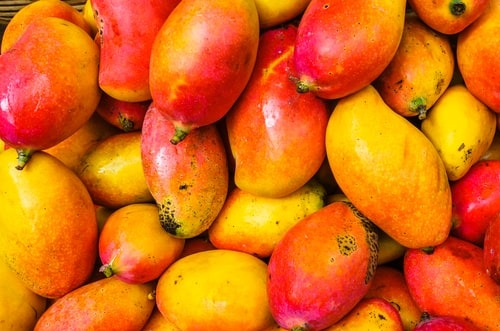India Mango Industry Faces Devastating Crop Loss Due to Extreme Weather

India is the leading global mango producer, accounting for around 50% of global production. In 2020, Indian mango production reached 24M mt (million metric tons) according to the latest available FAOSTAT data. Strong domestic demand for mangoes in India means that production almost exclusively goes to the local market, with only 168,483mt exported to global markets in 2021. The United Arab Emirates and Saudi Arabia are the largest export markets for Indian mangoes accounting for around 30% of export volumes. The Nepalese market more than doubled in 2021 to a total of 18,000mt while exports to the Netherlands increased by 64% to 12,000mt. Overall, Indian mango exports are estimated to have grown by 32% in 2021.
Indian mango production is forecast to be substantially reduced in the 2022 season due to sustained unfavourable weather conditions. India experienced unseasonal rain from October to December 2021, which disrupted and delayed flowering. Flowering usually starts in December and lasts until February, depending on the region, but for the 2022 season flowering was delayed by a month due to the weather. More rainfall and cold weather in January and February of 2022 further disrupted flowering in some regions. Furthermore, the good rains after a spell of three years of drought resulted in high soil moisture content leading to vegetative growth, negatively affecting the flowering and fruit set. Heatwaves in March further hindered the fruit set and caused the fruit to drop. The crop has also been affected by both hoppers and borer pests this season. Overall, a disastrous production season for the Indian mango industry.
The delay in flowering, vegetative growth, and fruit fall combined with the pests have negatively affected the mango crop expectations in all major producing regions in India. Production estimates are down between 30% and 80% across regions. Uttar Pradesh, the largest mango producing region in India accounting for 23.47% of production is anticipating a decrease of 80% in its 2022 mango crop compared to previous years. Considering the conservative scenario where 30% of total production is lost will lead to an estimated 7.2M mt less mangoes in the Indian market. Estimates at the end of May 2022 point toward an anticipated 50% decrease in total production which will lead to 12M mt less mangoes in the Indian market. To provide perspective, the expected reduction in Indian mango production in 2022 is three times the annual production volume of China, the second-largest global producer.
The mango harvest season in India usually ranges from April to July. With a month delay in flowering, the harvest is also delayed by a month. This means India will hit the peak of its harvest season during June and July with production stretching until August. The production season might overlap with the rainy season which could increase disease pressure and cause quality issues, causing further reductions in production volumes, especially for mangoes destined for the fresh market. 2022 will be a difficult season for Indian mango producers with final damage estimates only known once the delayed season is over.
The decrease in production is putting upward pressure on mango prices in the local Indian market. Prices have crossed INR 100/kg in most markets in northern and southern India. The lower production and high prices will also hurt India's mango exports industry. The mango export industry is small compared to local consumption and is limited by the higher costs of Indian mangoes compared to countries like Brazil, Peru, Israel, and Pakistan. India has been striving to increase productivity and reduce costs to be more competitive in the international markets. The high price of 2022 mangoes will make Indian mangoes even less competitive on the global stage and likely decrease export volumes.
One positive change in the export landscape is that mango exports to the US will resume in 2022 after a two-year pandemic-induced hiatus. US phytosanitary inspectors have returned to India enabling exports to resume. The export of Indian mangoes has been restricted by the US since 2020 as USDA inspectors were unable to visit India for inspection of irradiation facilities due to restrictions imposed on international travel because of the COVID-19 pandemic.





